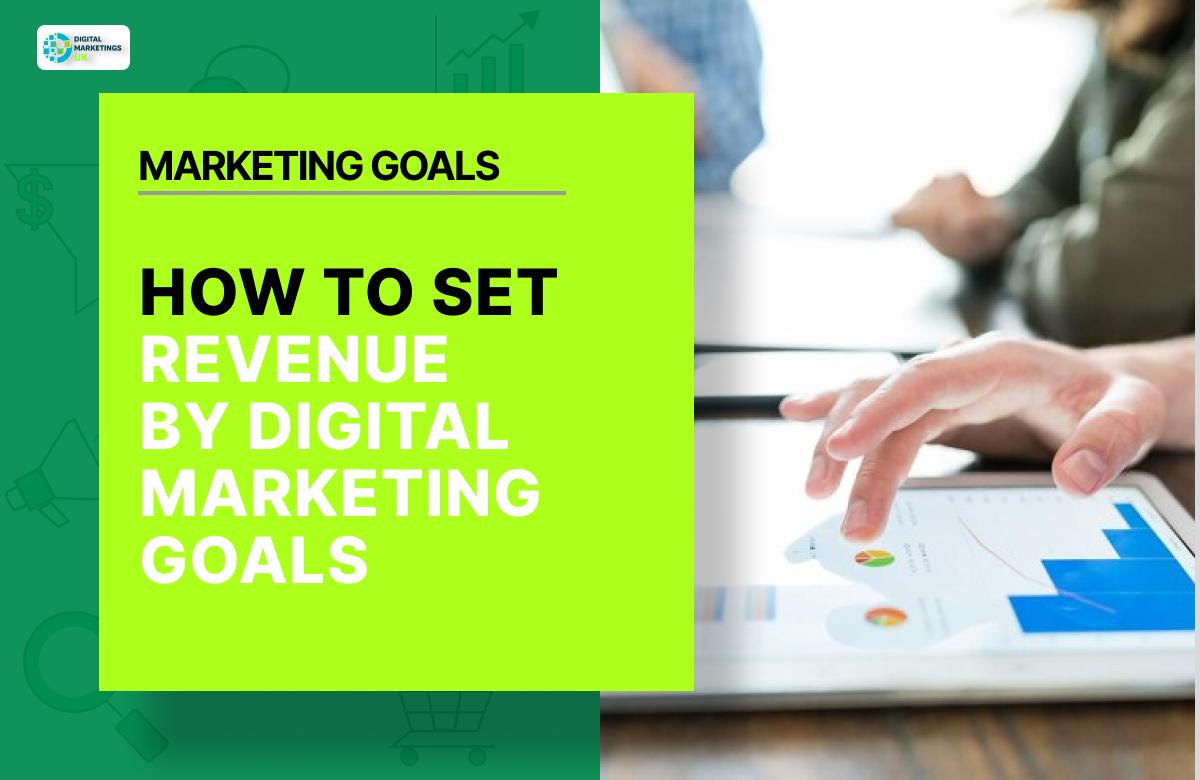Setting Revenue Goals with Digital Marketing
Stating revenue targets through marketing is a powerful business model for the expansion of large-scale business and the achievement of measurable economic outcomes for internet business. As many find the acquisition and retention of the customers going digital. It is important that the generation of revenues must be intentional and realistic for all sizes of businesses. Here is a complete guide to setting these goals which will be highly helpful for you with some tips from DigitalMarketings.uk.
Importance of Revenue Goals in Digital Marketing
Revenue objectives are central because they direct you toward whether or not your digital marketing initiatives are successful. Digital marketing, when not driven by clear financial targets, may lack direction and focus resulting to wasted resources, and lost opportunities. It is effective in directing focus to certain strategies in order to meet the target. It helps determines optimum usage of channel of communication; and aids in evaluation of ROI.
Digital Marketing Strategy with Business Objectives
Do not just begin to set revenues targets especially for your digital marketing implementation before you begin by aligning the digital marketing objectives with your organization’s objectives. In any way, your goals points to branding, leads, or sales, your revenues should depict the financial goals of your business.
Example: If your business is entering a new industry, your digital marketing revenue target may concern itself with top of funnel objectives. If you are starting marketing for a new product, then the aim may be oriented on the achievement of sales increases by the first quarter.
When the digital marketing revenue generating targets are linked to organizational goals, then your marketing drives the business growth.
Define Specific and Measurable Revenue Goals
It also important that the goals you set for your revenues should be SMART, which stands for Specific, Measurable, Attainable, Relevant, and Time-bound. It makes it easier to monitor and to hold people to account for their work and their outputs.
Specific: This must be done, though a clear definition of the actual totality of revenue one seeks to generate. For instance, Specific measurable objectives can include;’ Generate an increase in monthly revenue by £5000 from online sales from £10000 to £15000.
Measurable: Usefully, make sure that progress toward the goal can be monitored. This could mean isolating a particular form of ROI such as revenue by channel or CLV.
Achievable: The realistic goal, which should be set, would be based on the past achievements and the current market trends. What is your current revenue status, resources you have, and opportunities for development?
Relevant: The goal should be related to your business development plan. For example, its contribution to targeting higher margin products or entering a highly saturated market.
Time-bound: Assist the development of a time horizons for the accomplishment of the goal whether in quarter of biannual or annually basis.
Break Down the Revenue Goals into Actionable Steps
After determining revenue goals try to create smaller, more specific goals that are more achievable. This way you will only be concerned with the detailed strategies and methods that will assist in attaining the revenue objectives.
Evaluate Your Current Performance: Look at your revenue streams today and marketing platforms that you may be utilizing. Well, what is best practice here, and where do things currently fall short?
Choose Revenue-Focused Digital Marketing Tactics: Depending on your business and target market these are some of the strategies that you may be willing to address:
Search Engine Marketing (SEM): If correctly targeted it can lead to direct conversion and can be most effective if placed on either google or bing.
Content Marketing: Organic content that helps grow the top of the funnel and convert prospects is one thing that can be built for the longer term.
Email Marketing: Nowadays, several targeting and segmenting of consumers’ e-mail could increase the number of sales dramatically because of cross-sell and upsell strategies.
Social Media Ads: Social advertisements can be effective in raising profile awareness. And thus web traffic to the business’s ecommerce store or a specific landing page.
Use Data and Analytics to Refine Goals
Thus, constant analysis and optimization of the processes are required to guarantee you achieve your digital marketing revenue objectives. Plug in keywords about your business into Google Analytics, SEMrush or HubSpot for instance, and view what is performing well in terms of logistics and sales conversion.
Track KPIs: Keeping an eye on the necessary indicators, including conversion rates, average order value, customer acquisition cost.
A/B Testing: Use A/B testing techniques in landing pages, subject lines and ad creatives as a way of improving the next campaigns.
Customer Insights: Utilize data to explain how customers behave, what they want and what they are likely to buy. It will also enable you a tune your digital marketing strategy. And therefore employ better revenue generation methods.
Optimizing the Customer Journey to Maximize Revenue
Generation of revenues is not a question of getting as many people to the site or company as possible. It is a question of how many of those people are going to become paying customers. This is where customer journey map and the optimization of the same assumes importance.
Awareness: Leverage blogs, and articles, social platforms, and a combination of paid ads to drive the right traffic to your site.
Consideration: On the lead nurturing stage, you should make lead magnets. Which include free trials, consultation, and other content offers.
Conversion: Apply vivid calls to action, landing page targeting, and post-click e-mailing to make the sale.
Post-purchase: Upsell every customer, offer loyalty programs and e-mail marketing to the same customers in the hope they will generate higher revenues for you in the future.
If it is done for every stage of the customer journey. It means that you are extracting the maximum possible revenue out of each visitor.
Review and Adjust Goals Regularly
There shouldn’t be a fixed target of revenue to be generated from any entity or product line. Your goals may change when the market conditions, customer behaviour, and or your business environment change. Sometimes compare your performance with the targets. And if you see that you are off the correct trajectory then you adjust your direction. Innovativeness ensures that your digital marketing process is always valid. And responsive to the requirements of the market.
Sum Up
However, the establishment of revenue goals in the field of digital marketing is not only about sales growth. But about providing clear goals that can define a name spike in various areas at once. When you can synch your marketing targets with your company’s goals, rely on statistics when making further decisions. And enhance your online efforts to bring effective results. Then, without a doubt, you can reach real financial success. Driven by data and focused on customers, your digital marketing campaigns will ensure maximum results. And go beyond revenue goals that are set. Visit Digital Marketing Services in UK for professional guidance and suggestions on how to set up realistic and achieving targets for your digital marketing revenue.



